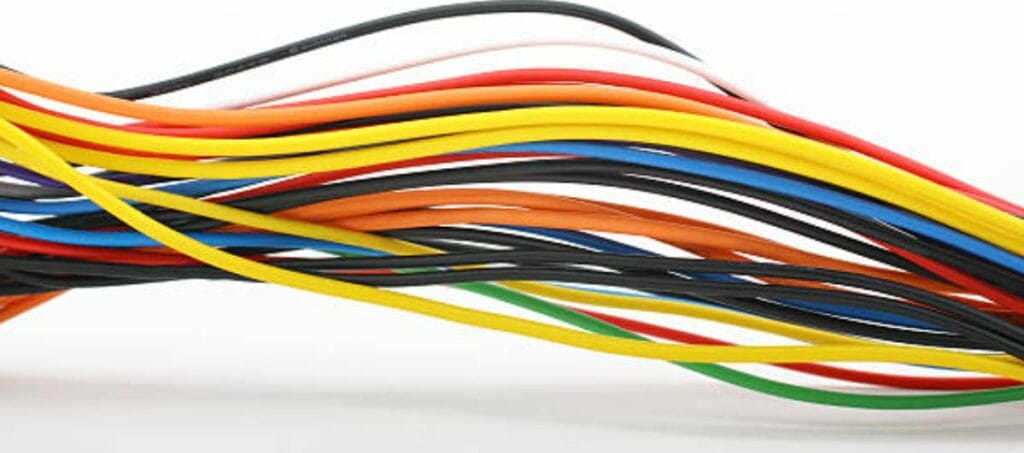Is White Wire Positive or Negative? (Wiring Basics)

Navigating the world of electrical wiring can sometimes feel like solving a puzzle. I often get asked whether the white wire is positive or negative. Well, let’s break it down with some of my hands-on experience.
In most of my projects, I’ve found that the white wire usually plays the role of the negative or neutral. This wire channels the unused electrical current back to the circuit breaker panel. It’s all about balance and safety, ensuring everything in your electrical system runs smoothly.
In this article, I will walk you through common situations where you might encounter a white wire and explain what it usually indicates. Let’s dive in and get those wires right!
Wire Color Coding in the US

Let’s dive into wire color coding – a crucial part of DIY electrical work. It’s like knowing the right tool for the job; you’ve got to know what each wire color means to keep things safe and sound.
So, here’s the lowdown on wire colors in the US, according to the National Electrical Code. You’ve got your big three: white, black, and red.
- Black Wire. This is usually hot or active, carrying the electrical current. It’s the one that brings the power. The black wire is your guy when looking for the positive wire in a setup.
- White Wire. This one’s the neutral. It doesn’t carry a charge but completes the electrical circuit by connecting to the black wire.
- Red Wires. These are a bit like the black wires and are used for carrying electricity, too. But you’ll mostly see them in more complex setups, like three-phase systems with more than one active wire. Picture heavy-duty appliances or big commercial projects – that’s where the red wire shines and is just as positive as the black wire.
- Green or Bare Copper Wires. These are your ground wires. They’re like the electrical system’s safety net, ensuring everything stays grounded and safe by conducting any excess current away during a fault.
Remembering these color codes isn’t just about getting the job done right; it’s about keeping things safe.
Understanding Global Wire Color Coding Standards: A Country-by-Country Guide

Let’s travel around the globe to explore how wire color coding can differ from place to place. It’s like discovering the unique character of homes in different countries – each has its style and rules.
Europe
Europe likes to switch things up a bit. Here, the live wire is usually brown – a bit different from the black I’m used to in the US. The neutral wires are blue, and like back home; the green-yellow combo is for the ground.
I remember working on a project in France, and this color scheme initially threw me for a loop!
Australia
Down under in Australia, they also use brown for the active (live) wire, which can be confusing if you’re used to the US standards. The neutral wire is light blue, and the earth (ground) wire is green or green-yellow.
I had a chance to work on a beach house there, and getting used to their wiring color codes was an interesting part of the job.
Canada
In Canada, it’s pretty similar to the US, with black for the live wire, white for neutral, and green for the ground. However, it is always good to double-check, especially in older homes.
On a renovation project in Toronto, I found some old wiring that didn’t quite follow the current standards, so it’s always good to be cautious.
United Kingdom
The UK has its unique setup. The live wire is brown (like in Europe and Australia), the neutral wire is blue, and the ground wire combines green and yellow. I haven’t worked on a project in the UK yet, but I always keep their standards in mind when discussing international electrical designs.
Remember, these color codes aren’t just for convenience; they’re essential for safety. Knowing and following these guidelines to prevent accidents is crucial, whether you’re a professional electrician or a DIY enthusiast working on an international project.
Wire Colors and Polarity
Let’s roll up our sleeves and get into the nitty-gritty of wire polarity. This is essential for getting the job done right and safely.
| Wire Color | Polarity | Function | Common Use |
|---|---|---|---|
| Black | Positive | Hot/Active wire carrying electrical current | General power supply |
| White | Negative/Neutral | Completes the circuit by connecting to the black wire | Returning unused current to the circuit breaker panel |
| Red | Positive | Hot/Active wire carrying electrical current | Three-phase systems, heavy-duty appliances |
| Green/Bare Copper | Ground | Conducts excess current away during a fault | Ensuring electrical system safety |
| Black (with white stripe) | Negative | Typically used for the negative connection | Speaker systems, audio equipment |
| Red (with dashed lines or stripes) | Positive | Typically used for positive connection | Car audio systems, amplifier connections |
| Unmarked or plain black/blue wire | Negative | Typically used for the negative connection | Lighting fixtures, electrical outlets |
Understanding the polarity of your wires is crucial not only for making sure your project works but also for keeping you safe. It’s like wearing the right safety gear – a must-have for any job.
Identifying Positive and Negative Wires
Let’s jump into one of the most crucial parts of electrical work – figuring out which wire is which. It’s like the detective work of DIY projects.
My secret weapon? A multimeter. This little gadget is a game-changer, telling you straight up which wire is positive and which is negative, and it’s great for both AC and DC power.

Picture this: you come across a wire with a white stripe. In the world of wires, that’s usually a hint that you’re looking at the negative one. But what if things get a bit confusing?
That’s where a bit of DIY creativity comes in. A strip of red tape or a swipe of a brightly colored marker can help mark the positive wire, making your life much easier.
Even that white wire, typically negative, can pack a punch and conduct electricity. So, my golden rule? Always, and I mean always, make sure the power is off before diving into your wiring work.
Frequently Asked Questions
- What is the Significance of Wire Colors in Electrical Wiring?
- Colors in electrical wiring aren’t just for show – they’re like the blueprint of a circuit’s functionality. Each color, whether white, black, red, or green, indicates a specific role in the electrical system, helping identify a wire’s purpose and ensuring safe handling quickly.
- Can Wire Color Standards Vary By Country?
- Absolutely! As different countries drive on different sides of the road, wire color standards can vary internationally. Being familiar with local codes is important, especially when working on an international project or using imported electrical components.
- How Can I Tell Positive and Negative Wires Apart in DC Systems?
- Identifying positive and negative wires in DC systems can sometimes feel like solving a puzzle. Usually, the red wire is positive, and the black or blue wire is negative. If both wires are black, look for a white stripe or marking on the negative wire.
- Is It Safe to Rely Solely on Wire Colors?
- While wire colors are a great guide, they’re not foolproof. Always double-check with a multimeter or other testing equipment, especially in older systems where wiring might not adhere to current standards. It’s like measuring twice and cutting once – always a good policy.
References
Organizations:
- National Fire Protection Association (NFPA). https://www.nfpa.org/en
- International Electrotechnical Commission (IEC). https://www.iec.ch/homepage
Books:
- “Ugly’s Electrical References” https://www.uglys.net/
- “Wiring Simplified: Based on the 2020 National Electrical Code” by Frederic P. Hartwell, Herbert P. Richter, and W.C. Schwan. https://shop.harvard.com/book/9780997905328
Website Resources:
- International Cablemakers Federation (ICF). https://icf.at/
